Tour Details
Museum of Unionist Military History
Housed in East Belfast’s Ballymac Friendship Centre, on the interface between loyalist Pitt Park and nationalist Short Strand, you will find the Museum of Unionist Military History. The museum has artefacts that chart over 150 years of local involvement in the defence of the Crown and the protection of the Union with mainland Great Britain..
Tour Details
Inside The Museum
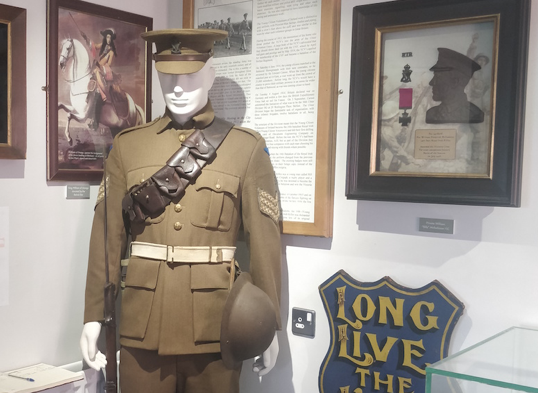
1853 – 1856
Personal items and letters from local man Edward Baird who fought in the Crimean War (1853 – 1856) start the journey and we move through the history of the Royal Irish Rifles (who fought in Indian Uprising 1857; 2Nd Boer War 1899 – 1902 and WW1 1914-18).
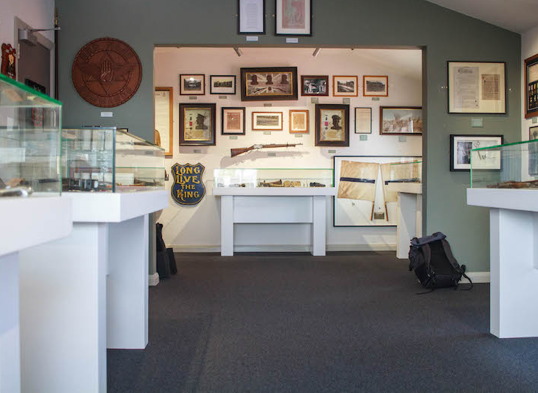
1912
In 1912 the British Government introduced the Third Home Rule Bill, offering Ireland self-government. In response to, unionists formed a militia known as the Ulster Volunteers in 1912 (reorganising into the Ulster Volunteer Force in 1913) who would rise to arms if Ulster needed defended. The Ulster Covenant – a pledge to resist an Irish Government ruling Ulster – was drafted in 1912, and hundreds of thousands of people signed it.
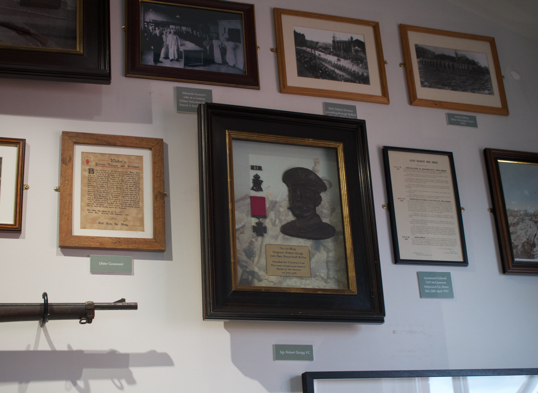
1914
The Museum has many original signed Covenants on display, as well as original clothing, uniforms and equipment that were used at the time. The Museum also houses two of the 200.000 weapons that were smuggled into Ulster on the Clyde Valley boat in April 1914 to arm the volunteers.
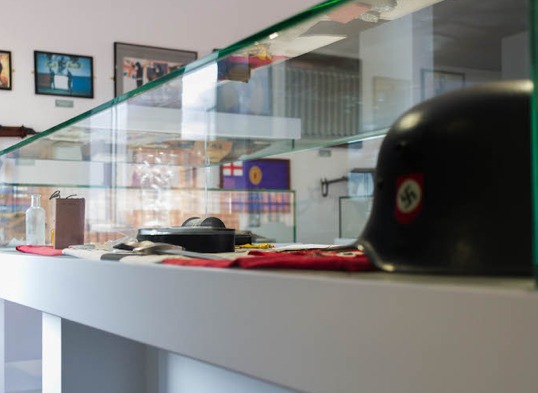
1916
WW1 would follow shortly after that and the Ulster Volunteer Force would become the 36th Ulster Division and would head to France to fight the Germans at the Battle of the Somme 1916. This would become one of the most iconic and bloody battles of the war. The 36th Ulster Division attacked on the 1st July and over half the men were lost on that day – a sacrifice that is well noted in history. Many original shells, bullets and weaponry gathered from the fields of the Somme can be viewed in the museum.
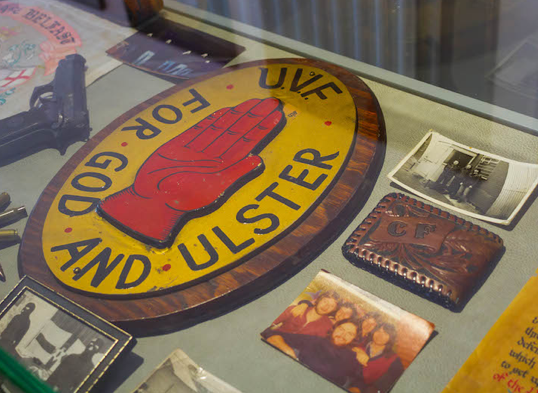
1921
The war had stalled Home Rule but the issue was soon back and in 1921 the ‘Partition of Ireland’ was enacted and Northern Ireland was formed. Violence and rioting plagued the new country for the following 40 years with loyalists and nationalists in Ulster clashing over sovereignty.
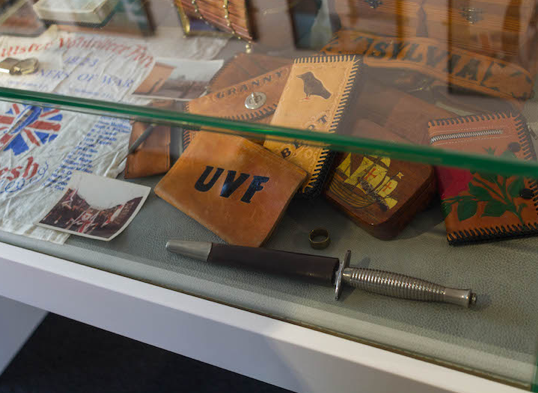
1966
1966 the Ulster Volunteer Force was re-established after an IRA bomb destroyed Nelson's Pillar in Dublin.At the time, the IRA was weak and not engaged in armed action, but some unionists feared that it was about to be revived and launch another campaign in Northern Ireland.
The UVF was led by Gusty Spence, a former British soldier. The organisation’s stated goal was to combat Irish republicanism – particularly the Provisional Irish Republican Army (IRA) – and maintain Northern Ireland's status as part of the United Kingdom. During the 30 years of the Troubles the organisation assumed responsible for over 500 deaths. A number of weapons similar to those used by the UVF can be seen on display including handguns and assault rifles such as AK47s.
Many members spent lengthy periods in jail, especially in Long Kesh (H blocks.) Here they developed crafting skills and made leather goods such as purses and belts and music, jewelry and trinket boxes out of wood. These would have either been presents for loved ones or items to be sold to help support their families. A vast array of these are on view.
The UVF declared a ceasefire in 1994 and our journey ends with the Good Friday Agreement of 1998.
